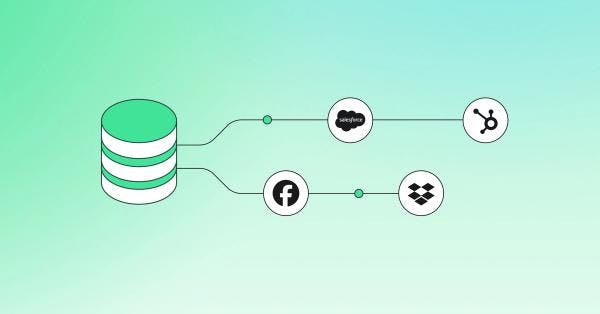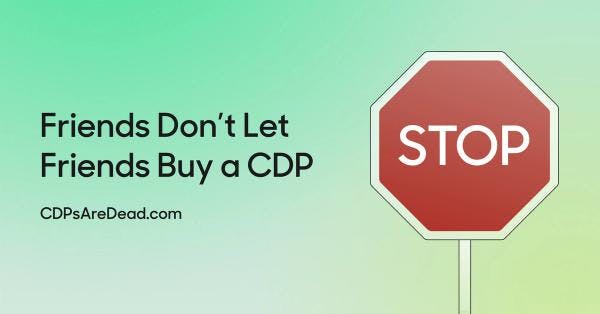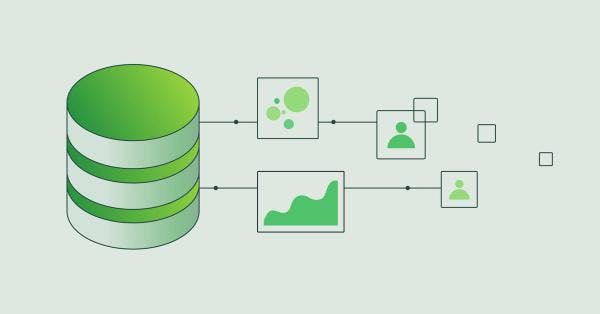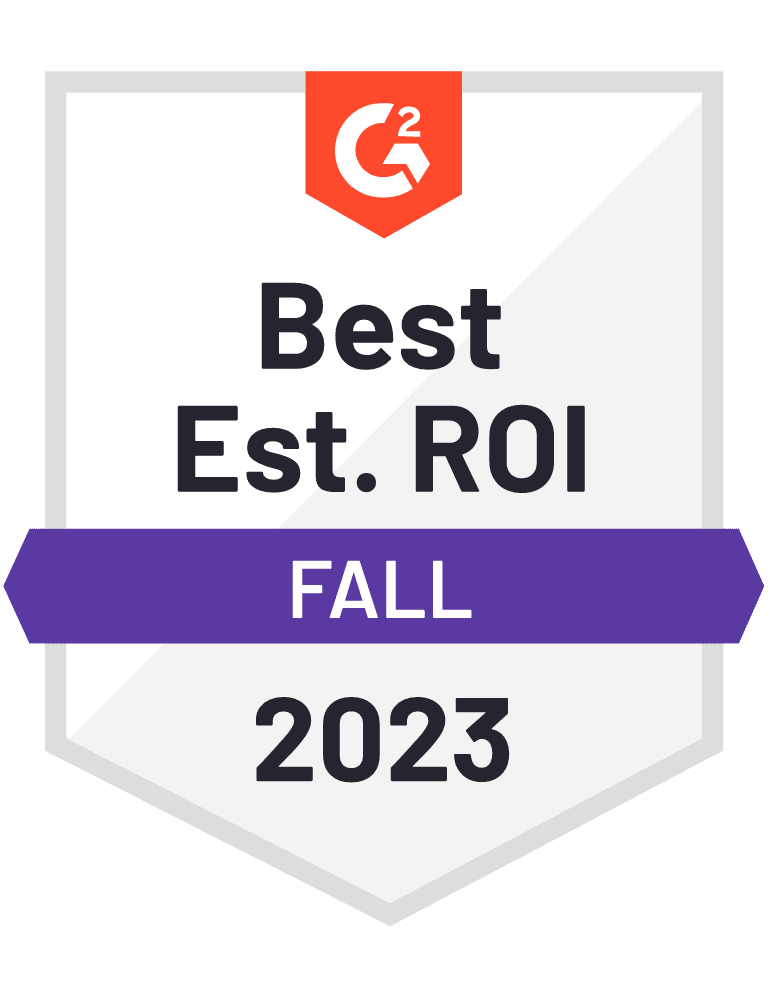CDP vs DMP: How Are They Different?
Learn the difference between CDPs and DMPs and how to use them to build and reach wider audiences for your marketing campaigns.

Craig Dennis
March 18, 2024
9 minutes

There are a lot of different technologies in the Adtech world, and marketing teams are constantly looking for the next best tool to help them reach their target audience, increase their return on ad spend (ROAS), and deliver more personalized experiences.
This blog post will cover:
- What is a CDP?
- What is a DMP?
- CDP use cases
- DMP use cases
- What are the differences between a CDP and a DMP?
- Choosing between CDPs and DMPs
What is a CDP?
A Customer Data Platform (CDP) is a solution that lets you collect, store, model, and activate your customer data. At their core, CDPs help you bring in all of your customer data so your marketing team can create unified customer profiles based on attributes (e.g., age, name, gender, income, etc.), user-completed events (e.g., item added to cart, signup, purchase history, etc.), or even custom data science models (purchase propensity, recommended product, lifetime value, churn score, etc.)
These platforms provide a single interface where your marketing teams build and manage audiences to create more personalized marketing campaigns across your tool stack to unlock better performance, increase growth, increase conversions, or even optimize marketing spend.
How Does a CDP Work?
CDPs solve many different use cases, but you can break them down into four components.
- Event Tracking: CDPs help you capture behavioral data using software development kits (SDKs) that you can deploy on your mobile or web app.
- Identity Resolution: CDPs can help with identity resolution by merging and deduplicating known and anonymous user profiles to create a unified customer profile to better understand your current customers. They also create an identity graph that shows all their actions and links them to individual customers.
- Audience Management: CPDs provide a visual audience builder where you can create customer segments without writing SQL.
- Data Activation: CDPs have a data activation component, so you can sync your audience segments to different marketing tools to create more personalized customer experiences.
What is a DMP?
A Data Management Platform (DMP) is a data onboarding tool that gives you access to large anonymous third-party datasets to enrich your audiences or target new audiences. Whereas CDPs deal with first-party customer data you collect about your customers, DMPs give you access to aggregated and anonymized data from data brokers. This can include everything from basic attributes, demographic data, browsing behavior, purchase intent, etc.
DMPs are valuable because they help performance marketers reach new audiences, automate ad bidding, and optimize marketing spend to ensure that every dollar is used wisely.
How Does a DMP Works?
DMPs can help you collect and capture data from your mobile apps and websites, but they’re more commonly used as third-party enrichment tools to unlock better audience targeting so you can reach wider audiences across your ad platforms. The main value of a DMP is that it gives you access to data you wouldn’t otherwise be able to use.
Another benefit of these platforms is that you can connect them directly to demand-side platforms (DSPs) to connect with ad exchanges, ad networks, and publishers to automate real-time bidding on ad placements. If you’re a marketer, you can create an audience in your DMP and sync it to a DSP.
CDP Use Cases
Fundamentally, CDPs were built to be the middle ground between data and marketing teams, giving a central place to manage and store customer data and providing non-technical marketers a self-serve interface to build and activate audiences at scale. While CDPs do provide inherent value to data teams, most of the use cases tend to be marketing-related and follow into one of the following categories:
- Personalization: CDPs give you access to all of your customer data. This includes everything from behavioral data, attributes, or custom data science models your data team has built. Fundamentally, this means you can use this information to build hyper-personalized experiences. For example, if you’re an e-commerce brand like Amazon, you can see your customers' past buying history and use that information to recommend products they might like.
- Advertising: CDPs provide immense value for advertising because they allow you to manage all of your audiences in one place centrally. In a CDP, you can build and define custom audiences and sync them directly to your ad platforms, eliminating the need for manual CSVs and ensuring that every ad platform has access to the same data to drive consistency across your campaigns. For example, if you’re an online shopping brand like Adidas, and a customer puts an item in their cart but doesn’t purchase it, you could take that customer, sync it to an ad platform like Facebook, and run ads to encourage them to return and complete their purchase.
- Lifecycle Marketing: CDPs allow you to create and orchestrate multi-channel campaigns for a specific audience to deliver a consistent experience across every channel (e.g., email addresses, SMS, push notifications, web, etc.). For example, if you’re a SaaS company like Hightouch, you can build an audience of customers who are likely to churn and send them an email and show them ads with the same messaging to maintain consistency.
- Data Enrichment: CDPs don't just have utility for marketing teams. They can also be used to power the rest of your business. With a CDP, you can send enriched customer data to your operational tools to empower other teams in your business. For example, if you’re a SaaS company like Iterable, you could send your product usage data into a customer relationship management tool so your sales team can see how customers interact with your product and tailor any sales material accordingly.
- Analytics: CDPs provide valuable customer insights and campaign understandings so you can make better decisions about allocating your marketing budget and building better audiences to optimize your ROI.
DMP Use Cases
DMPs are mainly used to optimize and improve ad performance in ad platforms, so most use cases are based on managing and enhancing your advertising campaigns.
- Targeting: DMPs give you access to rich amounts of third-party data so you can create detailed audience segments with attributes that you define, like age, location, gender, etc., and reach audiences that you couldn’t have otherwise reached. Increasing your targeting criteria allows you to create and deliver more personalized messages and offers to your consumers. For example, if you had a premium dog food brand, you could target people who are dog owners, have a household income of over $100,000, and have recently been browsing pet health and wellness content.
- Programmatic Bidding: Managing hundreds of ad campaigns is nearly impossible. Now, imagine trying to bid on all the ad placements you want manually, and it gets even more challenging once you add in all of your ad platforms. By nature, DMPs are designed to integrate with DSPs, so you can use programmatic bidding to automate this entire process. This means you can set criteria (how much you want to spend, your ad creatives, and the target audience you want to reach) all within your DMP, manage all auction bidding automatically, and ensure the DSP shows your ad to the right users.
- Data Onboarding: Uploading your audience data to all your ad platforms is another key challenge that DMPs solve. With a DMP, you can ingest all of your first-party data, enrich it with third-party data from the DMP to include more data points on your customers, and then send that data automatically directly to all of your ad platforms (e.g., Facebook, Google, X, TikTok, etc.) This is a critical use case if you want to increase your match rates (e.g., the likelihood of an ad platform matching your user to a user in the platform) to ensure you’re targeting the right users.
What are the Differences Between CDP and DMP?
Both CDPs and DMPs can help you build and target audiences. The key difference between the two is that DMPs specialize in data onboarding, and CDPs specialize in helping you activate your first-party data. Understanding the differences can be challenging, so here’s a quick table that breaks down the underlying differences.
| Feature | CDP (Customer Data Platform) | DMP (Data Management Platform) |
|---|---|---|
| Data Source | First-party data | Third-party data |
| Data Type | Collects and manages detailed, personally identifiable information (PII) | Focuses on anonymized data such as cookies, device IDs, and IP addresses |
| Purpose | Creates a unified customer profile by integrating data from multiple sources | Focuses on audience segmentation for targeted advertising and marketing campaigns |
| Privacy and Compliance | Focuses on privacy and compliance due to the handling of PII | Needs to comply with privacy regulations, but the focus is more on anonymized data, which has different compliance requirements |
| Use Cases | Personalization, advertising, lifecycle marketing, data enrichment, analytics | Programmatic advertising, audience targeting for ads, media buying, and real-time bidding (RTB) |
| Integrations | Integrates with various marketing and advertising tools to activate data across channels | Integrates with advertising networks, exchanges, and platforms for ad targeting and buying |
| End Users | Used by marketing, sales, customer service, and other customer-facing teams | Used by advertisers, marketers, and publishers |
Choosing Between CDPs and DMPs
CDPs and DMPs are vital tools in nearly every Martech stack. If one of your main goals is to reach new customers you have no data on, enrich your existing audiences with third-party data, or automate your programmatic bidding, then a DMP will probably provide immense value to you.
On the other hand, if you want to leverage your unique first-party data and build audiences you can activate across all your marketing channels (e.g., ad platforms, lifecycle marketing tools, etc.), then a CDP is probably a better choice.
If you’re trying to get the best of both worlds, then a Composable CDP like Hightouch merges the capabilities of the two together so you can build and activate audiences while also enriching them with third-party identifiers to boost your match rates and automate data onboarding into your ad platforms. If you’re interested in learning more about Hightouch, book a demo now with one of our solution engineers to find out more.






